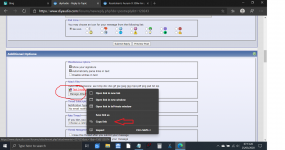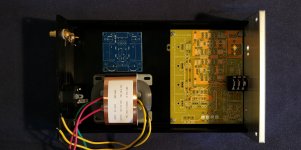According to Nelson Pass, they are legit if expensive. see post #20 of this thread.Sorry, no way. Doubt very very much they are legit.
Replacement For Toshiba 2SK170/2SJ74
The eBay seller “punkydawgs” is selling 100% genuine and verified parts. We know exactly who he is, and where (and when) the Toshiba parts were originally purchased.
Yes, they are expensive, but they are very tightly matched and are real.
Yes, they are expensive, but they are very tightly matched and are real.
Where do you get mated jfets for the input? The four of them I mean.
The other transistors are obsolete too, unavailable.
How about building a JC2 with all components you can arrange now, particularly the fets?
I've bought completly assembled board with broken variable resistor, i didn't debug it, just adjust. I do not even know is that preamp assembled with compared parts or not.
NOISE
Hallo have you solved the noise issue ??? wanted to buy it, but you made my mind clearer. Thanks I need an absolutely silent pre amp-
Hallo have you solved the noise issue ??? wanted to buy it, but you made my mind clearer. Thanks I need an absolutely silent pre amp-
Yes, but how do you insert the image in the body of the post?
Like this:

Upload the image in the normal way and then right click the link and copy it. Paste the link into the post making sure it has image tabs wrapped around it. The link needs to be within the tags like this

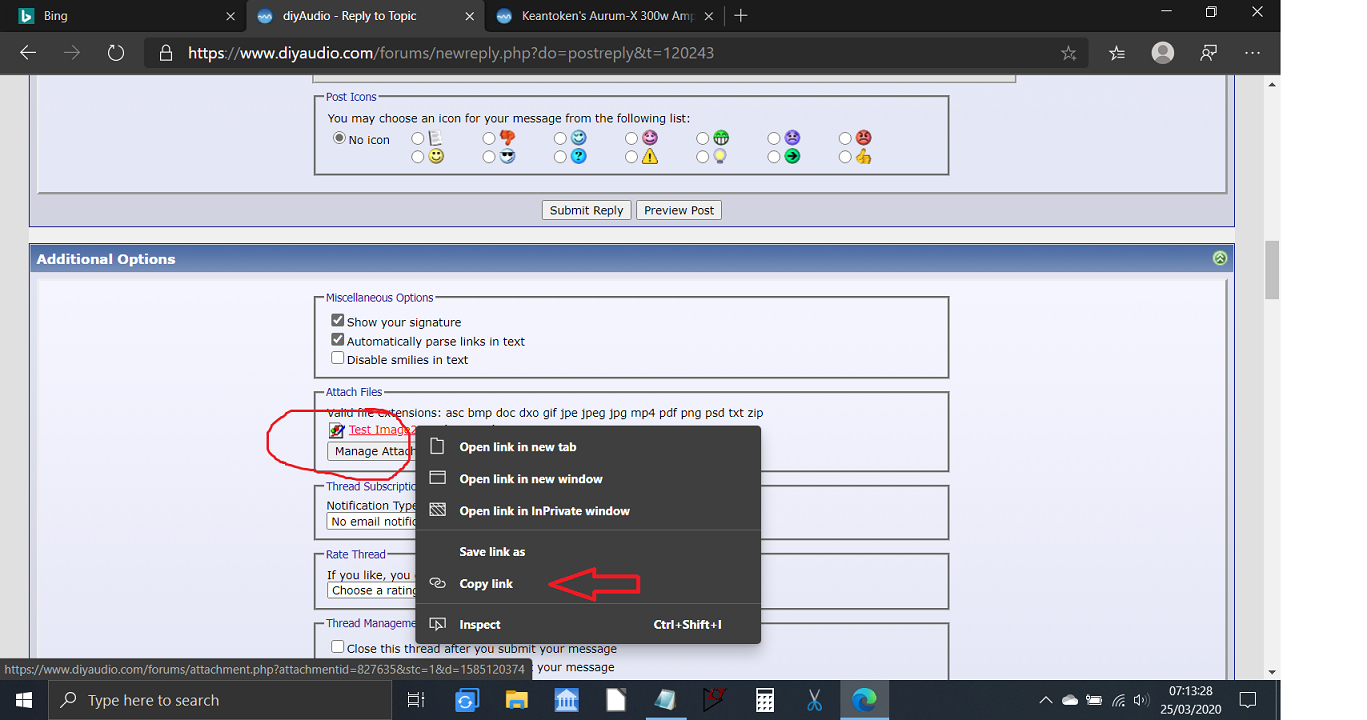
Make sure the images aren't to large. You might need to experiment.
Upload the image in the normal way and then right click the link and copy it. Paste the link into the post making sure it has image tabs wrapped around it. The link needs to be within the tags like this
Make sure the images aren't to large. You might need to experiment.
Attachments
...
John made it crystal clear that this circuit needs well matched JFET for the IPS, which I doubt the e/bay version (either one) had.
For what it's worth, I've just got this headphone amp kit from Aliexpress, basically a JC-2 with different input JFets and MOS output buffers. I wasn't expecting much, but the matching of the input Fets is a BIG surprise: inside of a ziplock bag, there were 4 n-ch and 4 p-ch with a hand written label : 10.22
And so I tested them, at 9V and 25°C:
- 2SK246: 9.48, 9.42, 9.42, 9.50 mA
- 2SJ103: 9.28, 9.38, 9.32, 9.29 mA
The seller is no longer in business, but I found another one and ordered a spare.
John made it crystal clear that this circuit needs well matched JFET for the IPS, which I doubt the e/bay version (either one) had.
My earlier quote may not apply to your new found gem. I have learned from several forum members that Chinese clone small signal JFET can work very well. They can give excellent result when well matched. Please, check the matching of the small jFET before you solder them in place. Yours seem to match very, very well. I will not be surprised if you get an excellent sounding headamp. The output MOSFET K2381/J407 may not be optimal and have high non-linearity. But they still sound fine with high feedback in the circuit.For what it's worth, I've just got this headphone amp kit from Aliexpress, basically a JC-2 with different input JFets and MOS output buffers. I wasn't expecting much, but the matching of the input Fets is a BIG surprise: inside of a ziplock bag, there were 4 n-ch and 4 p-ch with a hand written label : 10.22
And so I tested them, at 9V and 25°C:
To me, it looks like a 1% matching! I have no idea where the original "10.22" comes from; maybe they have their testing facilities in Siberia 🙂
- 2SK246: 9.48, 9.42, 9.42, 9.50 mA
- 2SJ103: 9.28, 9.38, 9.32, 9.29 mA
The seller is no longer in business, but I found another one and ordered a spare.
I used an E19 board with almost identical circuit. The K2381/J407 are switching MOSFET. I am waiting for a few pairs of Toshiba 2SK2013/2SJ313 from parkit to replace them. I can't say if the improvement is audible or not because the E19 with K2381/J407 sound excellent too. I set my E19 board to 60 mA bias current which is the same as your kit. It keeps my Sennheiser HD600 and HD598 well inside class A operation. The K2381/J407 case surface go to about 40F above ambient temperature when the case is open. It should be ok in any air conditioned room. In class A, it does not get warmer even when you run the headphone in high volume. 😀 My headphone amplifier case stays 13-15 degree above ambient when closed.
Good luck and let us know how the project turns out. Do you see their headamp in a completed box? It uses 2 10000uf/60V capacitor for the PS.
Last edited:
... The output MOSFET K2381/J407 may not be optimal and have high non-linearity...
I think you're right: EUVL tested them and found pronounced thermal hysteresis. As replacements, I ordered some IRF710/9610 from Digi-key; they just came in today after some comical mishaps, compliments of UPS. I'll test them tomorrow.
There're a few things I don't like in the original kit, so I'm thinking of doing these:
- MOSfet will be IRF's
- Standing currents to be set at 2, 5 and 100mA: these seem to be OK on simulation
- Add a standard +/- 18V pre-regulator to feed the board, and a mix of Silmic's and KT's (Nichicon) for smoothing
- Add local FB to the VAS (I'm a tube guy, and the standard SS practice of applying 60dB+ of FB scares me to death)
- Maybe change the poles & zeros as a result of the above
- Remove the FB caps and use DC servo's instead
- Use the matching AL box as a heatsink, with all the TO-220's bolted to it
I am a lateral MOSFET person and never feel comfortable with the IRF vertical.I think you're right: EUVL tested them and found pronounced thermal hysteresis. As replacements, I ordered some IRF710/9610 from Digi-key; they just came in today after some comical mishaps, compliments of UPS. I'll test them tomorrow.
There're a few things I don't like in the original kit, so I'm thinking of doing these:
LTspice thinks I'll get -120dB of H2 and H3; we'll see. I'm waiting for the nylon washers for the TO-220 that I forgot to order, so it'll be another month before real testing time. 🙂
- MOSfet will be IRF's
- Standing currents to be set at 2, 5 and 100mA: these seem to be OK on simulation
- Add a standard +/- 18V pre-regulator to feed the board, and a mix of Silmic's and KT's (Nichicon) for smoothing
- Add local FB to the VAS (I'm a tube guy, and the standard SS practice of applying 60dB+ of FB scares me to death)
- Maybe change the poles & zeros as a result of the above
- Remove the FB caps and use DC servo's instead
- Use the matching AL box as a heatsink, with all the TO-220's bolted to it
For the E19 I have, I use a twin LT1083 board and set it at +/-21 volts. Your amp has onboard Zener regulated PS which can be easily bypassed.
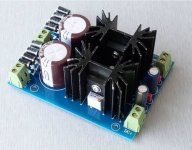
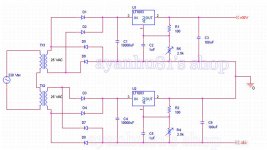
I considered DC servo at one point too. But the matched input keeps the output DC in less than 1-3 mV all the time and is stable. I gave it up.
Last edited:
.... Your amp has onboard Zener regulated PS which can be easily bypassed...
... Or converted to a cap multiplier to provide some measures of insolation against the nasties from the regulator. JC's been doing that since forever.
... I considered DC servo at one point too. But the matched input keeps the output DC in less than 1-3 mV all the time and is stable. I gave it up.
Thanks for the data. There has been others who confirmed this. It's not the offset I'm concerned, it can be nulled out; it's the offset drift over time/temperature. I'll look into it.
For what it's worth, I've just got this headphone amp kit from Aliexpress, basically a JC-2 with different input JFets and MOS output buffers. I wasn't expecting much, but the matching of the input Fets is a BIG surprise: inside of a ziplock bag, there were 4 n-ch and 4 p-ch with a hand written label : 10.22
And so I tested them, at 9V and 25°C:
To me, it looks like a 1% matching! I have no idea where the original "10.22" comes from; maybe they have their testing facilities in Siberia 🙂
- 2SK246: 9.48, 9.42, 9.42, 9.50 mA
- 2SJ103: 9.28, 9.38, 9.32, 9.29 mA
The seller is no longer in business, but I found another one and ordered a spare.
Thanks for the link you provided. I wonder why chinese use word 'tube' to describe transistors. Is it some stupid google translate slang? Or on purpose?
Not really "stupid", but the Chinese language has lots of homonyms/synonyms, therefore the confusion.
Try Google translate, look for "transistor": it's "晶体管", the short form is "管". Now translate it back to English, and you've got "tube", QED.
The funniest version is "bile", which actually is the short for bulb (as in lamp): 胆.
Try Google translate, look for "transistor": it's "晶体管", the short form is "管". Now translate it back to English, and you've got "tube", QED.
The funniest version is "bile", which actually is the short for bulb (as in lamp): 胆.
Last edited:
晶体管 means tube made from crystals.
Which is a good description, not ?
😉
Patrick



But wait until you look into the Chinese grammar: orange is 橙, oranges is also 橙. Context sensitivity is everything, which loops back to the initial Q. 🙂
You need another 40 years or so before you can try to teach me anything about the Chinese language.
😉
Patrick
😉
Patrick
I'm not sure which one I'm using, but here's all I've got; just put them in their respective folders: C:\Program Files\LTC\LTspiceXVII\lib\sym for the .asy and C:\Program Files\LTC\LTspiceXVII\lib\sub for the .lib & .sub and you should be good.
Also including z.lib with all the stuff I usually use.
Also including z.lib with all the stuff I usually use.
Attachments
Yes, EUVL's test and comment are what poked me to look at the Toshiba 2SK2013/2SJ313 which seem to be the only TO-220 medium power MOSFET designed for audio. A little more choice in TO-3P, but they do not fit the PCB I have. It will be very enlightening to see whether you like the IRF710/9610 or the shown to be non-linear switching K2381/J407 better.I think you're right: EUVL tested them and found pronounced thermal hysteresis. As replacements, I ordered some IRF710/9610 from Digi-key; they just came in today after some comical mishaps, compliments of UPS. I'll test them tomorrow.
I'm waiting for the nylon washers for the TO-220 that I forgot to order, so it'll be another month before real testing time. 🙂
- Home
- Source & Line
- Analog Line Level
- Variation on the JC-2 preamplifier


